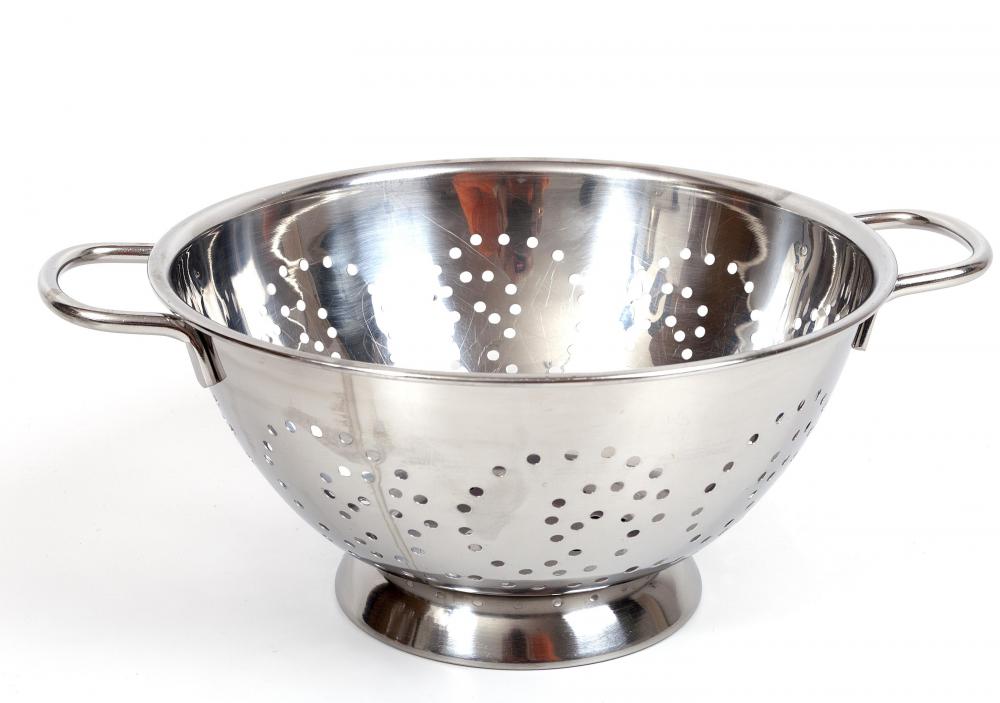At WiseGEEK, we're committed to delivering accurate, trustworthy information. Our expert-authored content is rigorously fact-checked and sourced from credible authorities. Discover how we uphold the highest standards in providing you with reliable knowledge.
How can I Make Chicken Stock?
Chicken stock is a classic base ingredient for soups, stews and sauces. It has so many uses that it is sold pre-made and packaged in the supermarkets. However, nothing has quite the flavor of homemade chicken stock.
A basic chicken stock starts with a big pot. A stockpot is nice, but the Dutch oven that came with the cookware will work, too. Add about 3 quarts (3 liters) of water to the pot and put in about 2 pounds (1 kilogram) of chicken bones and bony parts. Bring this to nearly to the boil. Cut into large pieces 2 peeled onions, 2 celery stalks, 2 peeled carrots, 2 bay leaves, 2 sprigs of thyme and about 1 teaspoon of black whole peppercorns. Lower the heat and simmer for two hours. Skim the foam and fat off the top during cooking. The cook can stop the cooking at this point, or continue to simmer the liquid for another 2 hours, to make a demi-glace for sauces.

When the stock is cooked, the cook then strains the whole pot through a colander or strainer, preferably through a cheesecloth, into another pot. The stock is then ready for use. When cooled, it can also be poured into ice trays and frozen in cubes until it is needed. When the cubes are frozen, they can then be placed into freezer bags labeled with the date, to save space.

A Chinese-type flavor can be added to chicken stock with the addition of ginger chunks and garlic. Add a dash of Italy with a couple of teaspoons of marjoram and oregano. Adding sofrito will give the chicken stock a Latin flavor. Cumin or curry powder will flavor the chicken stock nicely for Indian food, and lemongrass and kefir lime leaves will impart a taste of Thai cuisine to the mixture. It all depends on the cook’s preferences, and what uses the chicken stock will serve.

One great advantage of homemade chicken stock is that the cook knows exactly what is in it. There are no artificial preservatives, flavors or other unwanted ingredients. The cook can also exactly adjust the seasonings so the chicken stock is suited to his or her individual preferences. Making chicken stock does not require a great deal of effort and every cook would be well served to learn the technique.
AS FEATURED ON:
AS FEATURED ON:














Discussion Comments
I usually purchase several chickens at a time which I skin and bone. The meat then being all boneless and skinless except the wings and drumsticks. The skin is left in pieces about the size of the palm, and fried crisp. The bones and other scraps are covered with water and simmered for a couple of hours. After the broth has cooled somewhat, it is strained and skimmed; the larger bits of meat are salvaged. I usually separate the broth into two containers, one with clear broth only and the other having the bits of meat.
The celery, onions and carrots contribute a nice flavor, but they are not essential.
Post your comments